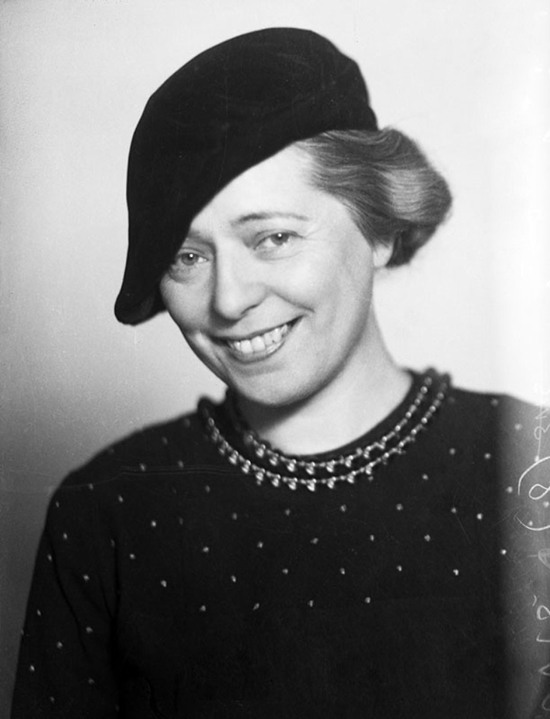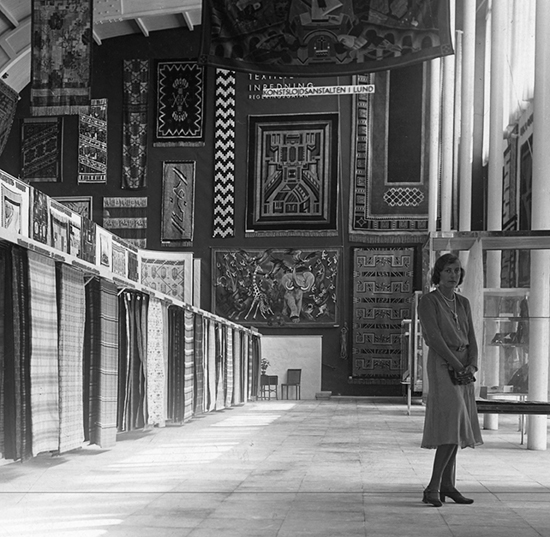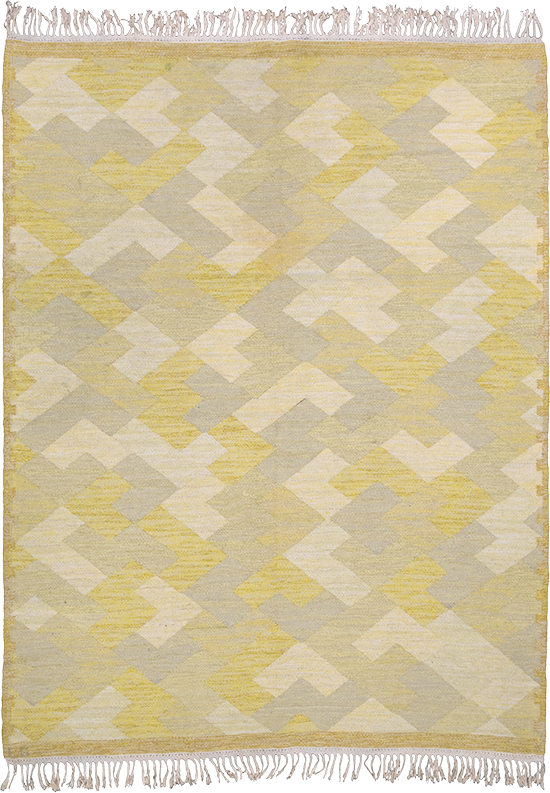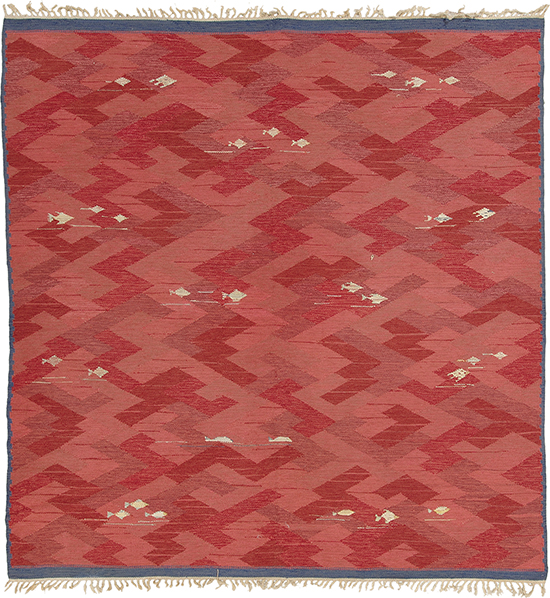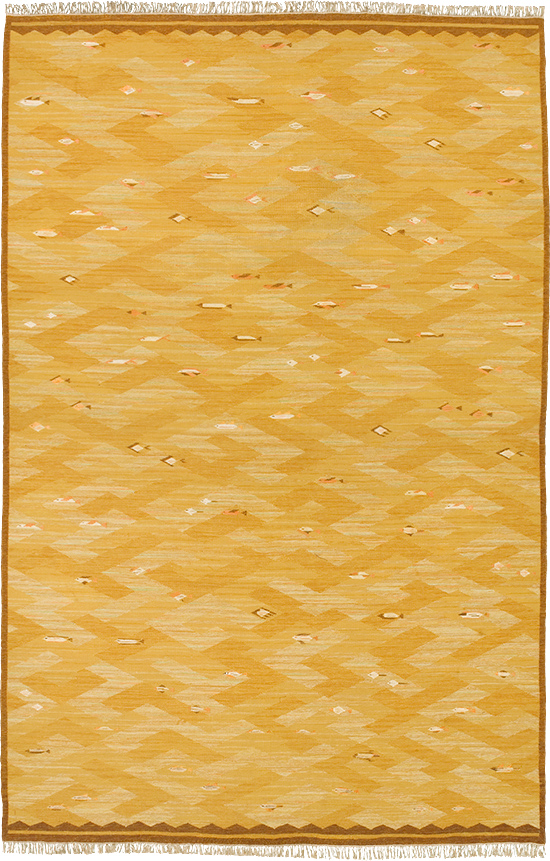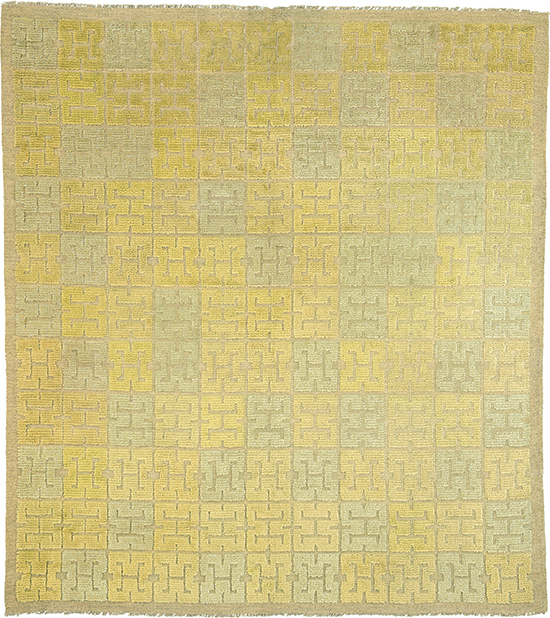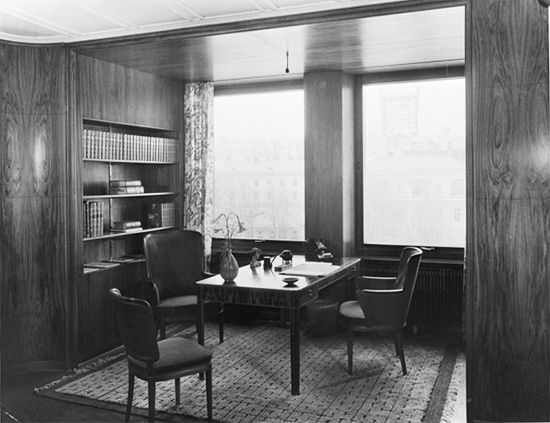June 13, 2019
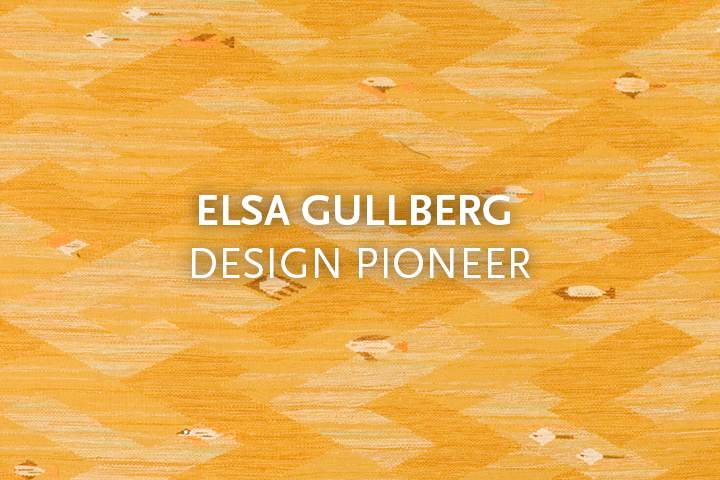
Elsa Gullberg could be called the mother of Swedish Modern. She was an extraordinary figure, far ahead of her time as a designer, a textile innovator, and an entrepreneur. Born in Malmo in 1886 into a bourgeois family, she had wanted to be a doctor but because of her father’s early death she was forced to take another, more traditional path for a woman in her time. She entered the Konstfack, the art and design school in Stockholm, to study textile crafts. After her studies, she worked as an assistant for Lilli Zickerman, an influential figure who along with Märta Måås-Fjetterström set the course for twentieth-century textile design. This appreticeship allowed her to finish her education by traveling throughout Europe, to Paris and London as well as other art and design centers.
The early twentieth century was a time that saw radical shifts in the arts, and Gullberg joined a group of young Swedish artists led by art historian Gregor Paulsson. Together they sought to radicalize and modernize industry while Sweden was being transformed from a traditional craft society to an industrial one.
Elsa Gullberg, Foto: Jan de Meyere. CreativeCommons/Stockholmskällan
The Swedish Society of Crafts and Design was reorganized in 1915 and Gullberg and her associates took over the educational system of the arts in Sweden. Inspired by the Deutscher Werkbund and Dresdner Werkstätte in Germany and the Weiner Werkstätte in Vienna, they sought to bring artists and industrial companies together in order to adapt Swedish industry to the modern world. This meant this meant incorporating radical ideas about creating industrial goods with the same aesthetic qualities as artisan-made products.
In 1917 Elsa Gullberg, by then a succesful textile artist, took on an extraordinary leadership role in this movement. She began managing a brokerage agency that provided artists to work in these industries, and unionized the industries at the same time. She was the broker for twenty-two companies in a variety of industries, including porcelain, glass, furniture, textiles, electrical, and packaging. Some of the artists she placed would go on to have important and influential careers of their own, including Wilhelm Kage at the Gustavsberg porcelain works, Edvin Ollers at the Kosta glassworks, Edward Hald at the Rorstrand porcelain works, and Simon Gate at Orrefors glass.
Gullberg and this group of reformers worked to modernize Swedish industry, publishing manifestos on the beautiful in the everyday and seeking to educate the public to embrace new technological forms. Gullberg herself also helped develop standardized industrial fittings and did a great deal else to modernize Swedish industry.
Gullberg is standing in front of her works. Image of the digital museum ARKM.1985-109-222.
In 1927 she opened Elsa Gullberg Textil og Inredningar AB, which is considered Sweden’s first interior design firm. There she continued to design carpets in pile and flat weave varieties, and wall hangings, but she had the foresight to understand what the market required: a complete interior design service, providing not just individual carpets but complete design work for large-scale projects.
FJ Hakimian Swedish Flat Weave Carpet #02700. Sweden ca. 1950. 7'4" x 5'8" (224 x 173 cm)
Gullberg’s designs are fashionable and elegant and still look fresh after more than eighty years. One of her famous designs was the pricken or dot design, first made in 1934 and then exhibited at the World’s Fair in New York in 1939, where it influenced the international fashion trend for polka dots in the nineteen forties. Another charming design is her fiskar or fish carpet, a design that was available in several colorways. The FJ Hakimian collection has two Gullberg fish carpets, one in red and another in gold. They are wonderful, chic and modern with an all-over angular geometric woven lattice design in close tones, with charming little white fish scattered and swimming over the field.
FJ Hakimian 'Fiskar' Swedish Flat Weave Carpet #02923. Sweden ca. 1937. 8'9" x 8'3" (267 x 251 cm)
FJ Hakimian 'Fiskar' Swedish Flat Weave Carpet #22202. Sweden ca. 1937. 14'11" x 9'11" (455 x 302 cm)
She also made luxiurious half-pile or relief carpets like the Kinesen, or Chinese, an example of which is in the Hakimian collection. This carpet is one of her classics and appeared on the cover of the exhibition catalog for a 1989 show of her work at Sweden’s National Museum in Stockholm.
FJ Hakimian 'Kinesen' Swedish Pile Carpet #03288. Sweden ca. 1935. 10'8" x 9'5" (325 x 287 cm)
Archival image from Elsa Gullberg’s firm’s own files. Shows a handsome wood- paneled office or library furnished with 'Kinesen' rug. Digitalmuseum # ARKM.1988-111-080401. Sune Sundahl, photographer.

